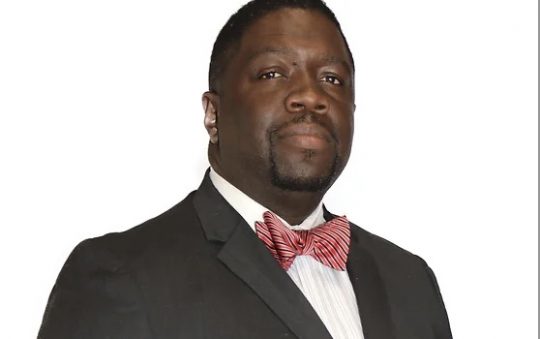
A new exhibit reveals Black L.A.’s key role in the evolution of gospel music. “How Sweet the Sound: Gospel Music in Los Angeles” uses vintage photographs, video recordings and other memorabilia to tell how African American artists and churches created a global musical phenomenon.

The multi-media presentation is at the California African American Museum in Exposition Park until August 26. The historical display charts the Black religious experience in Los Angeles from 1872 to the early 1970s.

Within that timeframe, a range of innovators and ministries are highlighted for their contributions to the genre. Starting with Biddy Mason, the founder of First AME Church of Los Angeles, the exhibit chronologically spotlights the influence of institutions such as Victory Baptist Church, St. Paul Baptist Church, Mount Moriah Baptist Church and the Azusa Street Revival along with notable ministers affiliated with the Church of God in Christ and AME denominations.

Also, biographical background and artifacts are featured about several gospel music trailblazers including Sallie and Cora Martin, Thomas A. Dorsey, Rosetta Tharpe, the Rev. James Cleveland, Andraé Crouch, Dr. Rodena Preston Williams, Dr. Margaret Pleasant Douroux, Doris Akers and Edna Tatum.
“Los Angeles was the epicenter of gospel music that changed the way the country and the world approaches it. The commercial success of gospel music happened here in South Central,” said Tyree Boyd-Pates, CAAM history curator and program manager who developed the exhibition with historian Dr. Daniel E. Walker, director of USC’s Gospel Music Archive.
“Aretha Franklin’s ‘Amazing Grace’ is her most successful album of all time and gospel music’s most successful album of all time. That happened with James Cleveland and the Southern California Community Choir right in South L.A.,” noted Boyd-Pates.
Walker, who wrote the exhibit’s historical placards, tied gospel music’s rise and popularity to the influx of African Americans migrating to Los Angeles, especially during the mid-20th century.
“L.A. became a magnet for people to migrate [to]. A lot of them were coming from Chicago, Detroit and the South and I think in that period, especially between the 1940s and early 1970s, demographically it’s the largest number of Blacks in L.A.,” he said.
Walker added that many African American migrants were focused on a new start and doing things differently, which resulted in the city becoming “a hotbed of innovation” for gospel music.
“We were innovating musically. When James Cleveland started taking choirs to another level, we were innovating. [With] Andre Crouch, people asked, ‘You can do that with gospel at Carnegie Hall?’”
Underscoring Cleveland’s productivity and generosity towards other artists, Walker shared that Cleveland released 198 albums. “Sometimes he would do 10 in a year. But, what he was really doing was giving people opportunity. He would put his name on it, go in and lead one song and the rest was their choir. Because it had James Cleveland’s name on it, it (the album) elevated.”
While Boyd-Pates mused that the exhibit may be the first to explore gospel music from a west coast perspective, he also acknowledged that it is not a definitive history or “end-all, be-all for gospel music in Los Angeles. It’s more of a conversation starter.”
The reason more historical information is not available may lie in the fact that there are few archives or collections about gospel music. Besides USC, Walker explained, “There is no space around America that’s dedicated to the study and preservation of gospel music.”
Boyd-Peters relied heavily on Walker and USC’s digital art resources and on the scholarly research of Dr. Jacqueline Cogdell DjeDje, emeritus professor and former director of the UCLA Ethnomusicology Archive. DjeDje has authored several books and articles on African and African-American music and gospel music in California.
“Several decades ago, Dr. DjeDje wrote about the history of gospel music in Los Angeles, so I used her research, statistics and interviews she conducted with many artists in the exhibition,” said Boyd-Pates. “We used the work she’s been doing in the community with the Black church for over 30 years and I thank her. Without her work 30, 40 years ago, the exhibition would not exist today.”
Still, the “How Sweet the Sound” exhibit offers a broad overview of Los Angeles’ impact on gospel music and both Boyd-Pates and Walker agree that the public will be enlightened by the display.
“This exhibition provides an overarching look at how African American migration patterns to Los Angeles ended up changing the world. Our love of music and our spiritual inspiration, not only touched our lives, but they impacted politics, pop culture and the world at large,” Boyd-Pates said.
Boyd-Pates and Walker will conduct of the exhibit on Friday, Feb. 16. To RSVP, visit caamuseum.org. To view the USC Gospel Music Archives, visit http://digitallibrary.usc.edu/cdm/landingpage/collection/p15799coll9.






